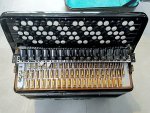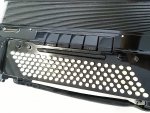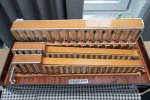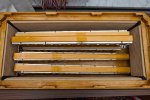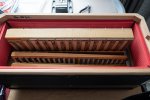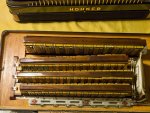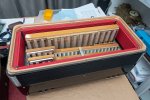Looks like your friend is right. The reed blocks are installed so that the reeds go from high to low from left to right. On a mirrored bass they are the other way. So I guess that in your case you cannot reverse the direction because the buttons for the high notes are on the opposite side from where the reeds are on the reed blocks (and vice versa). Here is a picture from the reed blocks on a mirrored C griff: Pigini Sirius, AKKO bayan, Victoria, Hohner Gola (picture taken from the other side), and Bugari... and invariably ALL of them have the low reeds near where the buttons for the low notes are and the high reeds near the buttons for the high notes. The only exception is the lowest octave which appears to be the same independent of whether the convertor is reversed or mirrored, and this is because these reeds are used for the Stradella base notes and are always spread over the entire length of the accordion while all the buttons for these reeds are on one side.
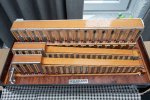
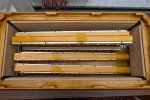
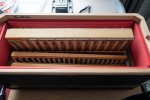
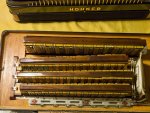
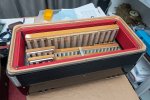
Let me add another piece of knowledge about your accordion for you, that you may like.
You may have noticed in your rightmost picture that besides the large reed block for the lowest notes you have another reed block. I believe this reed block contains higher reeds for the lowest octave base notes, that get turned on or off with the round register switches. This is the way it's done on a bayan. The pictures I showed earlier of the Pigini Sirius and the AKKO have these reeds mounted as piggyback on the large reed block. Both your construction and that of these others define how a bayan bass works, and the old 580 was also called a bayan by Bugari (whereas the new 580 is not). These extra reeds do not play on any note in the melody bass, which makes tuning them a bit more challenging but which makes the convertor mechanism simpler and therefore lighter to play. So you *really* have a good one here! Cherish it!
The same mechanism with extra reed block on the side is also used in the Bugari Bayan Prime!

